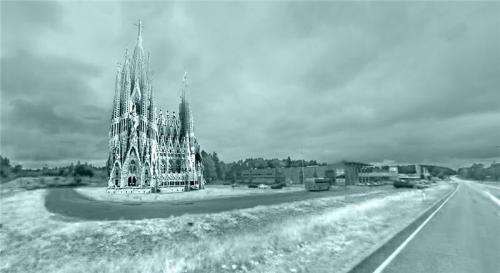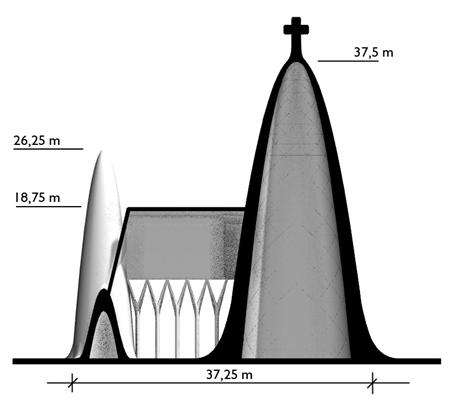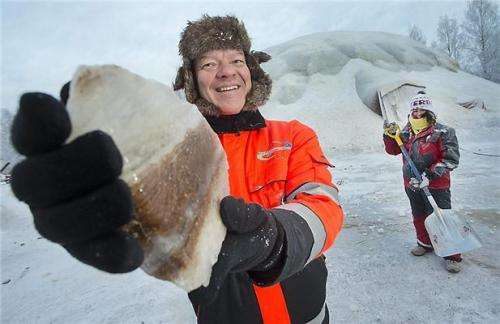Dutch student team builds 40 meter ice basilica in Finland in three weeks

Last year a team of students from Eindhoven (the Netherlands) built the world's biggest ice dome, with a diameter of 30 meters, in Finland. At the end of this year another team from Eindhoven University of Technology (TU/e) intend to travel to the frozen north to take on an even bigger challenge. They are going to build a church of ice, based on the Sagrada Familia, from pykrete – ice reinforced with wood fibers. And they aim to complete the almost 40 meter high model of the famous church in Barcelona (built on a scale of 1:4) in just three weeks.
"We could have just decided to build another, even larger, dome", TU/e lecturer and project leader ir. Arno Pronk explains. "But in building terms the Sagrada Familia is a much bigger challenge. And of course it's very recognizable." He also thinks the timing will be tougher than last year, partly because the ice basilica is a lot more complex. Last year the building work was delayed by one‑and‑a‑half weeks because there was no frost in Juuka (Finland) – the weather hadn't been so mild at that time of the year for the preceding 146 years. "If the weather is the same as last year we'll never be able to do it", laughs Pronk. The team will leave on 28 December, and the opening is scheduled for 17 January 2015. In the town of Juuka they're planning to make it into a big event.
Focus on structural aspects
Pronk and the two students who are leading the project together with him, Teun Verberne and Jordy Kern, want to show that pykrete is an excellent building material for temporary structures. "You can use it to build thin-walled temporary structures that are safe and low-cost", says Pronk. "Our technique enables environment-friendly applications such as seasonal storage in agriculture, the offshore industry and expeditions, as well as for recreational facilities like ice hotels." That's why the team are focusing mainly on the structural aspects of the building. "The structures in the work of the architect Gaudí are scientifically the most interesting", Pronk explains. "And although the ice building will have the same shape as the Sagrada Familia, it won't have the same decorative exterior."

Three times as strong
A 50-strong team will build the ice basilica by spraying thin layers of water and snow onto large, inflated molds and allowing it to freeze. They first spray a layer of snow, followed by a layer of water containing 10% sawdust. That mixture, called pykrete, is immediately absorbed by the snow and then freezes. The wood fiber content makes the material three times as strong as normal ice, and it's also a lot tougher.
Snow cannon
Once a strong layer has formed, the builders allow the molds to empty and then remove them. Because the structure is more complex than last year's dome, they have to monitor the quality of the building material even more closely. It's also a challenge to pump the pykrete up and spray it at a height of 40 meters. This time the builders will take a snow cannon with them to avoid a repeat of the snow shortage experienced last year. They plan to work in shifts, round the clock, in the freezing cold, because any longer interruptions would cause the equipment to freeze up.

Provided by Eindhoven University of Technology



















